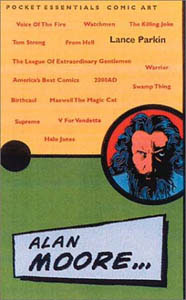



His works helped make a previously underappreciated form acceptable, catalyzed contemporary recognition of its literary potential, and assembled a diverse audience that unites mainstream and countercultural readerships. Through seminal series such as the V for Vendetta (1982-1989) and Watchmen (1986-87), Moore has radically extended the boundaries of comics during a three-decade career. One of the transformative figures in the history of graphic novel art, Alan Moore has somehow achieved global acclaim whilst remaining an underappreciated enigma, his works aptly described as “a peculiarly unsung triumph of British culture” ( Telegraph, 2007) In honour of his 60 th birthday in 2013, the comic app Sequential released a free Alan Moore updated comic biography. Often against his wishes and without his blessing, his books have provided the basis for a number of Hollywood films, including From Hell (2001), The League of Extraordinary Gentlemen (2003), V for Vendetta (2005), and Watchmen (2009). Also towards the late 1980s, Moore set up his own publishing imprint called Mad Love Publishing.ĭuring the 1990s, Moore produced another imprint called America’s Best Comics and series including The League of Extraordinary Gentlemen, Promethea, Tom Strong’s Terrific Tales, Tomorrow Stories and Top Ten. Many readers and critics consider Watchmen to be the best comic ever produced.īy the end of the 1980s, Moore was publishing his own graphic novels while also contributing to Batman and Superman stories. His 1986 work, Watchmen is his masterpiece, and helped redefine the comic book medium, changing the tone of comics to date. His first American series was Saga of the Swamp Thing. Gaining wider recognition as contributor to the British anthology magazine, Warrior, Moore began his most important early series, Miracleman and V for Vendetta, and was awarded the British Eagle for Best Comics Writer awards for both these works in 19. He moved on to contribute to Doctor Who Weekly and 2000 AD and begun creating several popular series such as The Ballad of Halo Jones and D.R. During the 1970s, Moore became a cartoonist, and his work began appearing in Sounds and NME under the pseudonym Curt Vile, Jill De Ray, and Translucia Baboon. Moore began publishing his poetry and essays in various fanzines during the late 1960s and eventually set up his own fanzine named Embryo. Born on Novemin a working class area of Northampton, England, the son of a brewery worker and a printer.


 0 kommentar(er)
0 kommentar(er)
